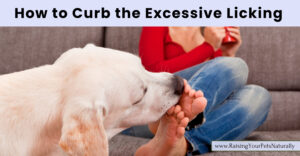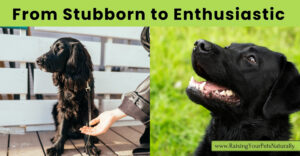Stop a Dog from Barking at Strangers
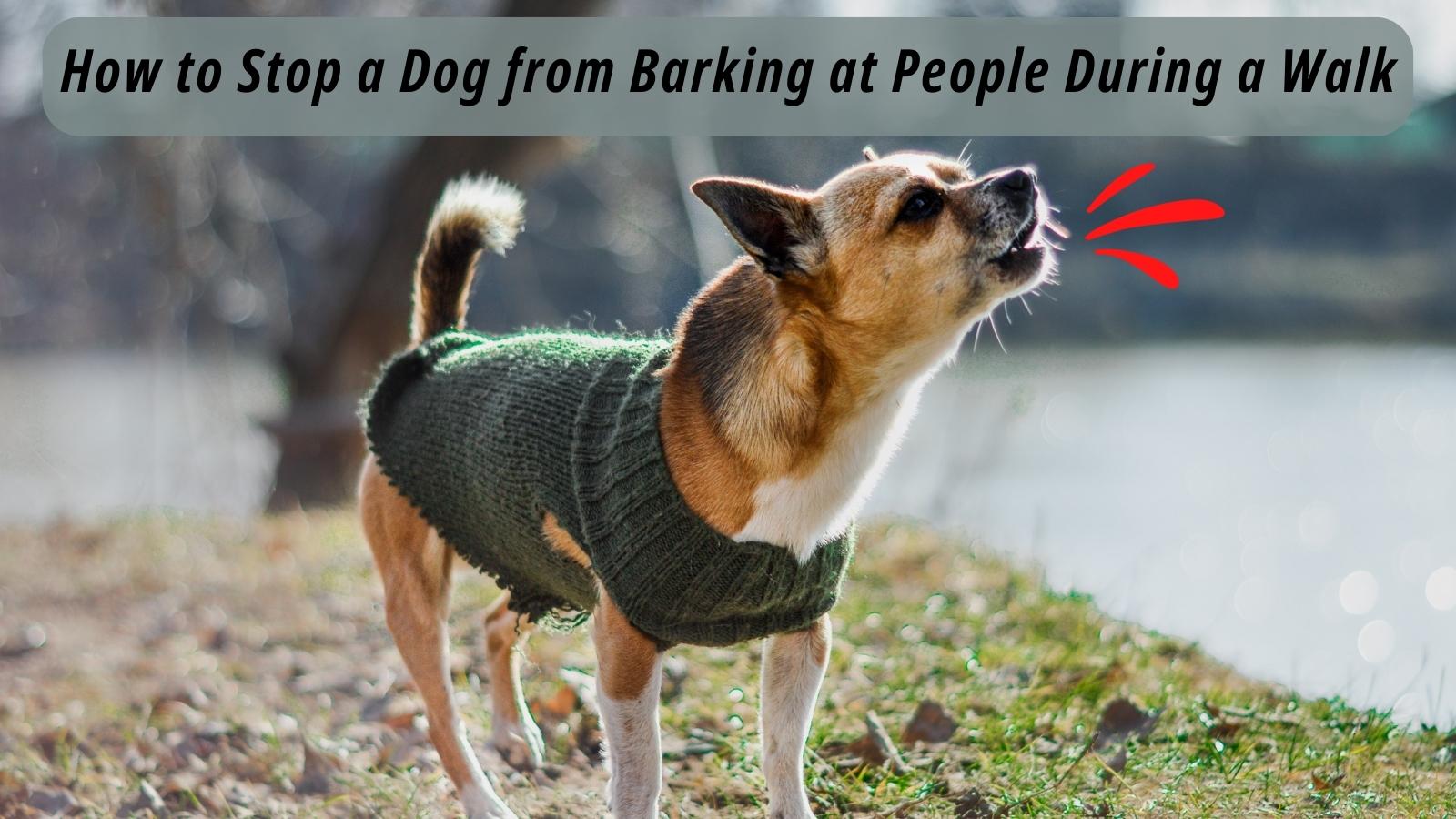
As a professional dog trainer, I receive many dog behavior queries. One of the questions I get asked a lot is how to stop a dog from barking at strangers during a walk. Today, I wanted to offer a few tips on this common, yet potentially serious dog behavior. If your dog is afraid of strangers, please be sure to read Dogs Afraid of Strangers
I received the following question from Suzie Q.
I’m asking about my daughter’s dog. He is a four-year-old and horrible on walks. He barks at people and does not listen. We have tried the pincher collar and treats. He also barks at the neighbors and does not listen. Well, sometimes. Any suggestions?
That’s a pretty complex question, and there are actually a lot of things that are going on. So for this Ask Tonya, I just want to offer some simple, short dog-training tips. This is not to address the behavior in depth because most dog behavior questions and concerns really need a detailed behavior assessment. Learn more about my one-on-one Skype dog training services here.
First, it’s her daughter’s dog. That’s always a bit of a red flag for me because dog behavioral training really needs to be part of their life. And when someone is emailing or calling me and asking for help for somebody else’s pet, it’s probably not going to be very successful because the person with the dog is the one who should be taking this first step.
So, hopefully, these tips will be able to be transferred to Suzie Q’s daughter and, hopefully, she will take them to heart and maybe see a professional dog trainer for guidance.
Watch this content on my YouTube channel. Don’t forget to subscribe.
Let’s take a deeper look at the dog behavior issues at hand.
The first thing that was written was “horrible on walks.” Now, it sounds like the dog is horrible on walks because he’s dealing with some behavioral issues, so it’s not just that he hasn’t learned to walk politely on a leash, but some issues that are happening are making him horrible on walks. Again, this is just a quick interpretation of the query. Read more about dogs lunging on the leash in this article.
“He barks at neighbors and does not listen.” I’m guessing this is part of the walk, too, and I’m guessing he does a lot of barking at people during that walk as well. So, the dog probably has some issues with people. read more about dogs afraid of strangers in this article.
Most behavioral issues actually stem from fear and anxiety, and the dogs tend to learn to cope by acting like bullies. *Bark bark bark*. *Lunge lunge lunge*. “I’m going to threaten you first so that you don’t invade my space”.
The first part of the training concerns the pinch collar. We don’t want to use anything that is negative in the sense of causing the dog pain, discomfort, anxiety, or stress—that would be the pinch collar.
So, obviously, I would dump that pinch collar right away, and I would want to make sure that everything is positive, light, and fun for the dog, so he can build up confidence and trust, and not have his walks be stressful. We want to change his mental state from something arousing and stressful to a more ZEN-like experience.
Depending on the breed and how big the dog is and the mom who’s walking him (the daughter), I would probably go with a front-clipping harness. This harness has an attachment to the front so that when the dog does pull if we have those oops moments since the leash is attached to the front, we would be able to turn the body and the head to refocus the dog.
If the person walking the dog is small or frail and the dog is big, then we might consider a dog head collar. Head collars go over the nose, back behind the ears, and get attached under the snout, not on the neck.
I don’t usually go to head collars first anymore because, one, it takes a lot of time for the dog to get comfortable with them—we don’t want to just slap them on and go for a walk. And two, the person who’s actually attached to that leash has to be really aware of what is going on so that the dog isn’t just pulling to the side and getting an issue with the neck, or pulling the dog really quickly and hurting the dog’s neck. So, we just have to be extra careful when we are using head collars.
Again, I suggest either a head collar or a front-clipping harness depending on what is going on with the dog and who the handler is. I prefer a harness, and I do not recommend a collar attached to a leash. I’m pretty much a harness person, or a head collar if needed so that I’m not doing any damage to the dog. You can read more about the injury caused by attaching a leash to a collar here.
Next, we want to make sure the treats are very valuable. We want to pair things up with good rewards and good food, with high value. I tend to go to meat and meat-based only. I think some of the best dog training treats include things like dehydrated beef, dehydrated salmon, rabbit, or something like that, with nothing added to it. No preservatives or any other fillers, just the meant.
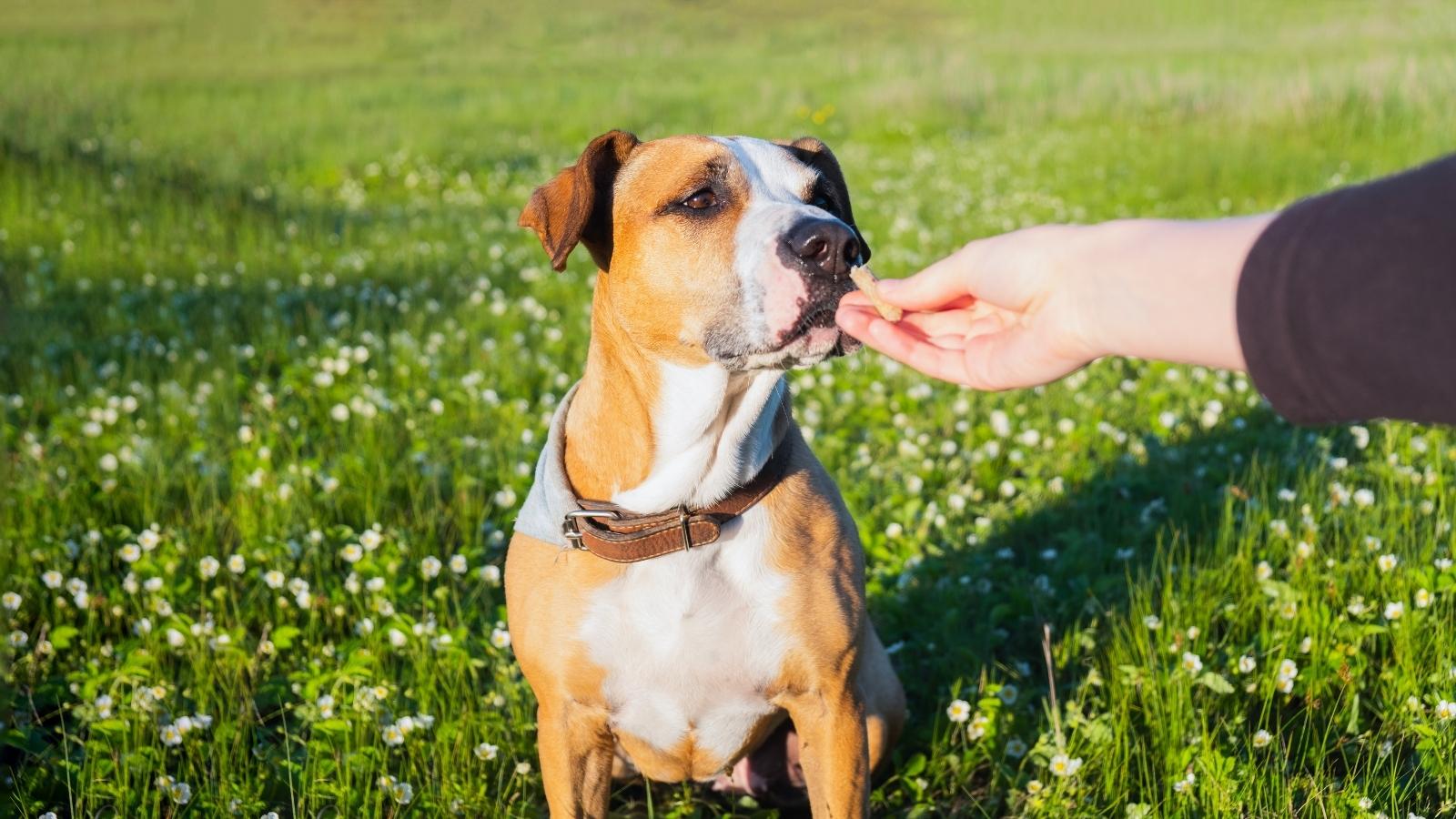
This way, when I’m rewarding my dog or the dog at the end of the leash, they’re getting pretty much straight meat. Then I can reward him often and can include that meat as part of the dog’s daily calories, and it will make the value high so hopefully, the dog will be able to go “Wow, Mom’s got meat. This is really good”.
The next part is we need to reassociate that people equal barking. This reaction is likely due to underlying anxiety that people are scary or bad. We want to change this association to people equal good things. Distance is going to be key here. You will want to find the distance that the dog doesn’t react, and that is crucial. I will say that again. It’s important to find the distance that your dog will NOT react.
If the person is too close, you are only setting your dog up to fail. “There’s a human, I need to bark at them. I have this set of emotions whenever I see a human.” If we have that, it’s not going to work.
You will need to figure out how far away from a stranger your dog needs to be to not bark or overreact. Is that twenty feet away, fifty feet away, or a hundred feet away? I don’t know what your X number is; you’ll have to find that first in order to set up a desensitization and counterconditioning dog training program. Once you know how far away the stranger needs to be, the dog training would look a little something like this.
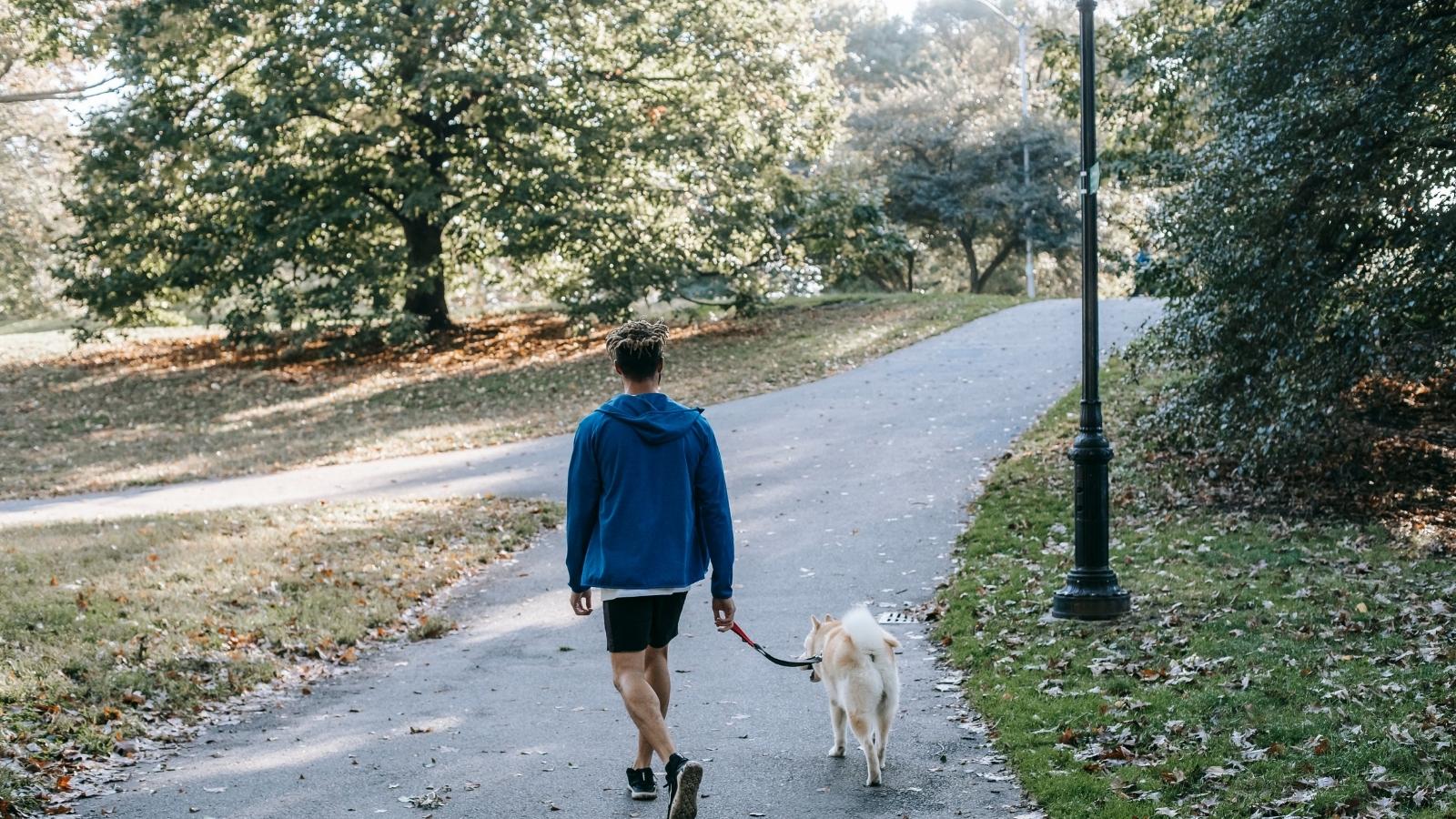
- Start at the distance your dog can be successful. Reward your dog with a high-value dog training treat when a stranger walks by at that safe distance. If you can’t do this on your regular walks and exploration, you will need to set this up with friends and direct them on what their role is. Do this without your dog present.
- The stranger walks by at the safe distance, your dog sees the stranger and doesn’t react, you say, “Yes!” and follow that with a high-value dog training treat. Repeat.
It may feel like your dog is more focused on you than the stranger, and that’s the point. You are laying a foundation that strangers are good, my human is good.
Remember, if he’s reacting, you need more distance. If your dog is always going over his threshold, barking, and lunging, then you are not at the correct distance. Even if he turns back to get the treat afterward, but he’s consistently barking and lunges first, and he doesn’t want to eat his treat, then you need to increase the distance.
I know that can be hard. My last dog was reactive, not toward people but toward other dogs, and my distance was a football field. I literally had to have friends and their dogs at the end of a football field distance, and Theo and me at the other end to be able to start our counterconditioning. That’s where we had to be. We weren’t able to go to parks, and we weren’t able to go on certain walks around the neighborhood because people with their dogs would come out of their houses, and then my dog would go over the threshold.
If you truly want to change the behavior, you have to find that distance first that they can be successful, and then gradually, over time and training and conditioning, that distance goes from, twenty feet to fifteen feet, to ten feet, etc. It does take time and definitely takes consistent practice. And you have to be able to set your dog up for success and help them get to that point.
There are things we can do to help move that along, I can’t really recommend exactly what because each remedy is specific to a dog’s behavior and history. But there are certain natural calming aids, herbs, supplements, flower essences, and things like that that can help a dog through his behavior modification program. However, ensuring you are meeting your dog’s 7 daily needs is a good start. Make sure you check out that video.
If you are looking to address your dog’s barking at strangers in more detail, please feel free to look into my private Skype behavioral sessions.
7 Daily Needs Don’t forget to subscribe to the channel for more free content.
Your questions or comments are welcome below.
Are you looking for even more ways to stay up to date with Raising Your Pets Naturally? Sign up for the newsletter for more tips and promotions. Don’t forget to be social and Like, Follow and Subscribe. Comments below are always welcome.
Facebook Twitter Pinterest Instagram YouTube
 |

If you found my blog helpful, please consider a small contribution. Dexter and I thank you! |
Google Adsense—>


